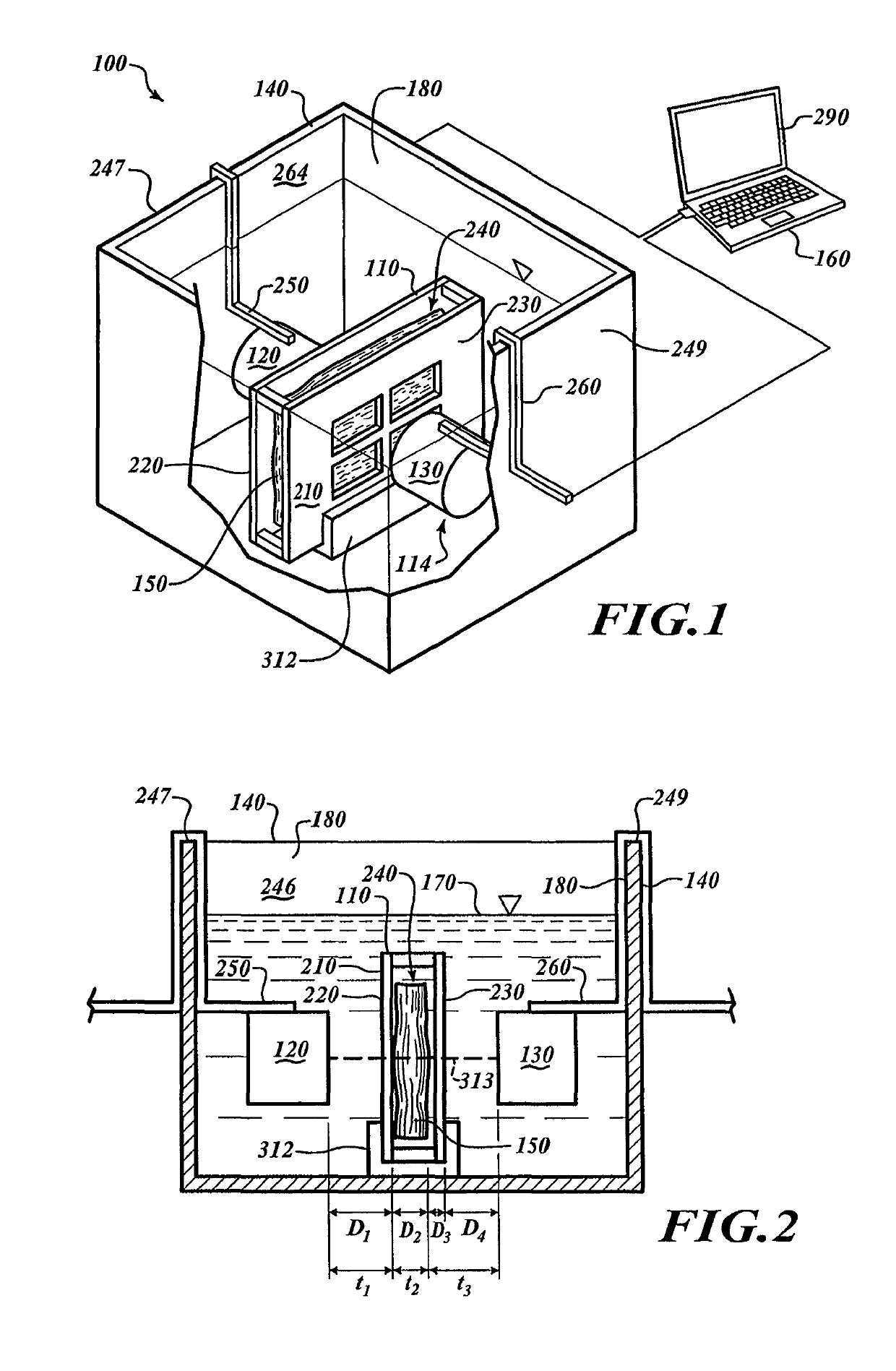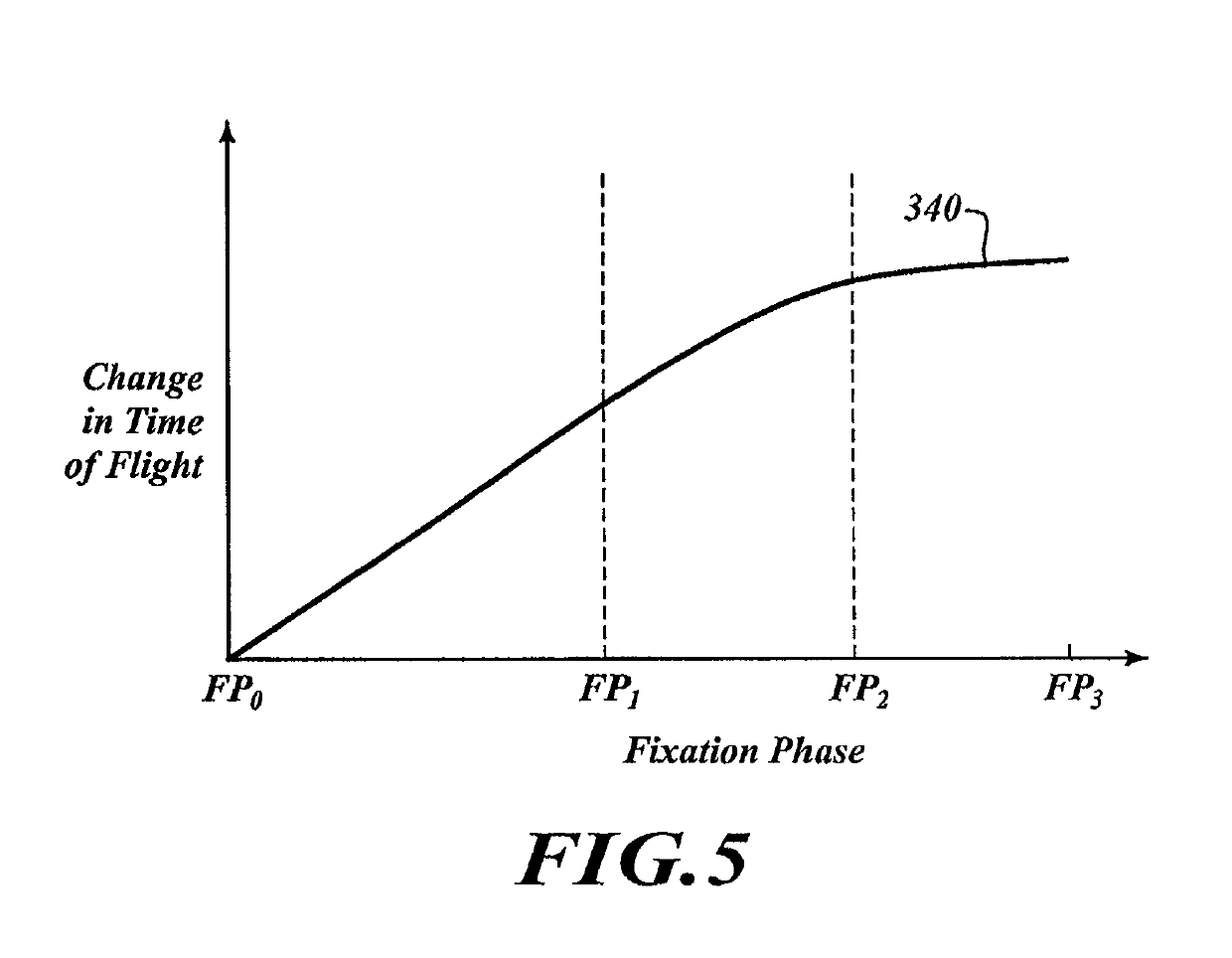Processing system for processing specimens using acoustic energy
a processing system and acoustic energy technology, applied in the field of methods and systems for analyzing specimens using energy, can solve the problems of difficult to diffuse processing liquid through the tissue, no standard procedures, staining problems, etc., and achieve the effect of reducing the fixation tim
- Summary
- Abstract
- Description
- Claims
- Application Information
AI Technical Summary
Benefits of technology
Problems solved by technology
Method used
Image
Examples
Embodiment Construction
[0082]FIG. 1 shows a processing system 100 for processing specimens. The processing system 100 includes a specimen holder 110, a container 140, and an analyzer 114 positioned in the container 140. The analyzer 114 includes a transmitter 120 and a receiver 130. A computing device 160 is communicatively coupled to the analyzer 114.
[0083]FIG. 2 shows the container 140 with a chamber 180 filled with a processing media 170. The specimen holder 110, the transmitter 120, and the receiver 130 are submerged in the processing media 170. To fix a tissue specimen 150, the processing media 170 can be a fixative that diffuses through the specimen 150.
[0084]To analyze the specimen 150, the computing device 160 causes the transmitter 120 to output energy that passes through the specimen 150. The receiver 130 can receive the energy and can send signals to the computing device 160 in response to the received energy. The computing device 160 analyzes those signals to monitor processing. Once processin...
PUM
| Property | Measurement | Unit |
|---|---|---|
| thickness | aaaaa | aaaaa |
| mass | aaaaa | aaaaa |
| time | aaaaa | aaaaa |
Abstract
Description
Claims
Application Information
 Login to View More
Login to View More - R&D
- Intellectual Property
- Life Sciences
- Materials
- Tech Scout
- Unparalleled Data Quality
- Higher Quality Content
- 60% Fewer Hallucinations
Browse by: Latest US Patents, China's latest patents, Technical Efficacy Thesaurus, Application Domain, Technology Topic, Popular Technical Reports.
© 2025 PatSnap. All rights reserved.Legal|Privacy policy|Modern Slavery Act Transparency Statement|Sitemap|About US| Contact US: help@patsnap.com



